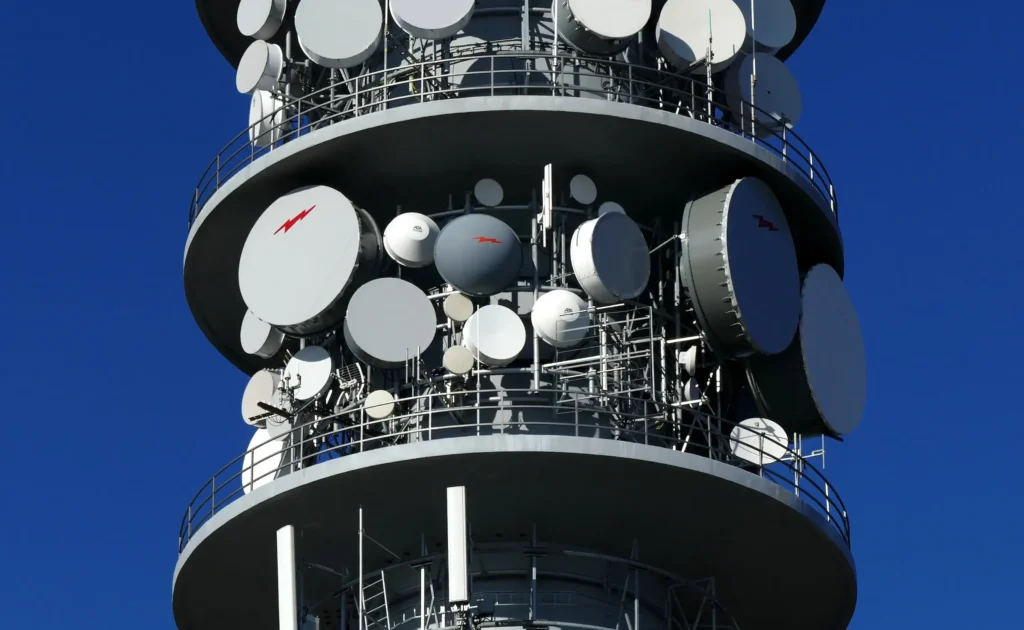Signal jamming is a technique used to block signals from being sent by states for media censorship. You may have heard of it in spy movies or video games. Jamming can also happen as a result of an attack by a hacker or neighbor.
Signal jamming is a very isolated attack that leaves victims without access to the internet or regular phone service. It is difficult to defend against this attack. There are many things you can do if signal jamming is a problem.
Contents
What is Signal Jamming?
Signal jamming refers to the act of interfering with a wireless connection between a device or access point. Signal jamming can be described as a Denial of Service attack (DoS) because devices within the jammed area are unable to access the internet.
Signal jamming ranges can be used for privacy purposes (when a company or person wants to stop the use of internet-enabled devices on their property), to state censorship, and for cyberattacks.
How does Signal Jammer Work?
Wireless networks allow devices to send and receive data using data packets at a particular frequency. Signal jamming is the use of a jammer to transmit “noise”, which disrupts the frequency range on which wireless devices operate.
Signal jammers are hand-held devices that block wireless communications within 15 meters of each other. You can either buy or make your own portable jammers. These jammers can be purchased for a small amount and disrupt communications on certain frequencies. They are used mainly for privacy and security purposes.
Stationary jammers, on the other hand, are designed to be mounted on a platform or in a building. Stationary jammers can be used to disrupt wireless communications across a wide range of frequencies and affect wider areas, including blocking drones. These features make stationary jammers more costly and energy-intensive, making them suitable for enterprise use.
Is Signal Jamming Legal
No. Individuals, businesses, and local law enforcement are prohibited from using jammers. Only certain circumstances allow federal law enforcement agencies to use jammers, but they must first obtain judicial approval.
This prohibition is based on the fact that signal jamming, regardless of intent, can cause public safety to be endangered. Signal jamming can interfere with emergency services as well as personal communication.
According to the Communication Act, tampering with wireless communication constitutes a federal crime. Anybody who buys, sells, or uses a signal jammer in the US is subject to civil and criminal penalties. However, cybercriminals have not been stopped by the threat of severe penalties.

What Can You Do to Stop Signal Jamming?
The majority of people won’t notice that their connection is down because all other things would be fine. The router will indicate that the router is working properly and cell phones will be able to receive reception. Problem is that a jammer can disrupt wireless transmission between devices, and their access points. What can you do?
1. Move to a Different Location
The signal jammer has a jamming range of five to fifteen meters. Consider moving away from your current location if possible. You can meet new people by asking if they have an active internet connection.
2. Modify Your Wi-Fi Frequency
The manual will contain instructions for changing your router’s broadcasting frequency. You probably tossed the manual long ago. You will need to log into the admin dashboard to check your Wi-Fi settings.
Wireless connections can be made using either 2.4 GHz or 5.0 GHz frequency bands. Most modern devices support both of these bands. The 2.4 GHz band is the most popular frequency for jammers. You can avoid DoS attacks on the 2.4GHz band by changing your WiFi frequency to 5.8 GHz.
There is one drawback: The 5.0GHz band supports faster speeds but has a shorter range. Because the signal cannot penetrate walls and solid objects, you will need to be closer than the router. The range restriction is temporary and effective in avoiding DoS attacks, but it makes it difficult to change your Wi-Fi frequency.
3. Modify Your Wi-Fi Frequency Channel
It’s a far cry from changing your Wi-Fi frequency completely. It’s worth trying, especially if you don’t have a device that supports higher frequencies.
The 2.4 GHz frequency has 11-13 channels. Each channel is separated by 5 MHz. The 5.0GHz frequency, on the other hand, has 25 channels. Each channel is separated by at most 20 MHz, and sometimes up to 160 MHz.
It can be difficult to switch channels, especially at 2.4 GHz. Interference from other channels is not an option. Interference from overlapping channels is very possible due to the small channel width at 2.4 GHz. This problem is less likely if you have a wider channel width on a frequency of 5.0 GHz.
4. Locate and Remove the Jammer
If all else has failed, the signal jammer may be an alternative. It’s still not an easy task, particularly since it’s simple to conceal a small, portable signal jammer.
It is still worth trying to find and remove the jammer. You only need to search within a radius of 15 meters. You can search for an antenna-equipped radio-like device in your area. The chances of an attacker being in your vicinity are reduced if they are in a backpack, or in a neighboring apartment. Private property cannot be searched without you trespassing.
Your chances of finding a stationary bomber with a greater range are slimmer. It is unlikely that an attacker would use such jammers because it would have a greater impact on the public and infrastructure, drawing unwelcome attention from law enforcement.
5. Contact Your Service Provider
The problem you are experiencing with your Internet Service Provider could cause you to be unable to access the internet. Your ISP may have cut off your internet service due to unpaid bills, or because you violated their Terms of Service. Service downtime may also be caused by an upgrade, faulty equipment, or bad weather. To confirm that your service remains active, you should contact your ISP.
It Could be Something Else Than Signal Jamming
Signal jamming, which is a lesser-known type of DoS attack, is prohibited by federal law. This prohibits the import, manufacture, and sale of jammers in the United States. Your inability to connect to the internet may be caused by other DoS attacks, such as a disassociation attack.








